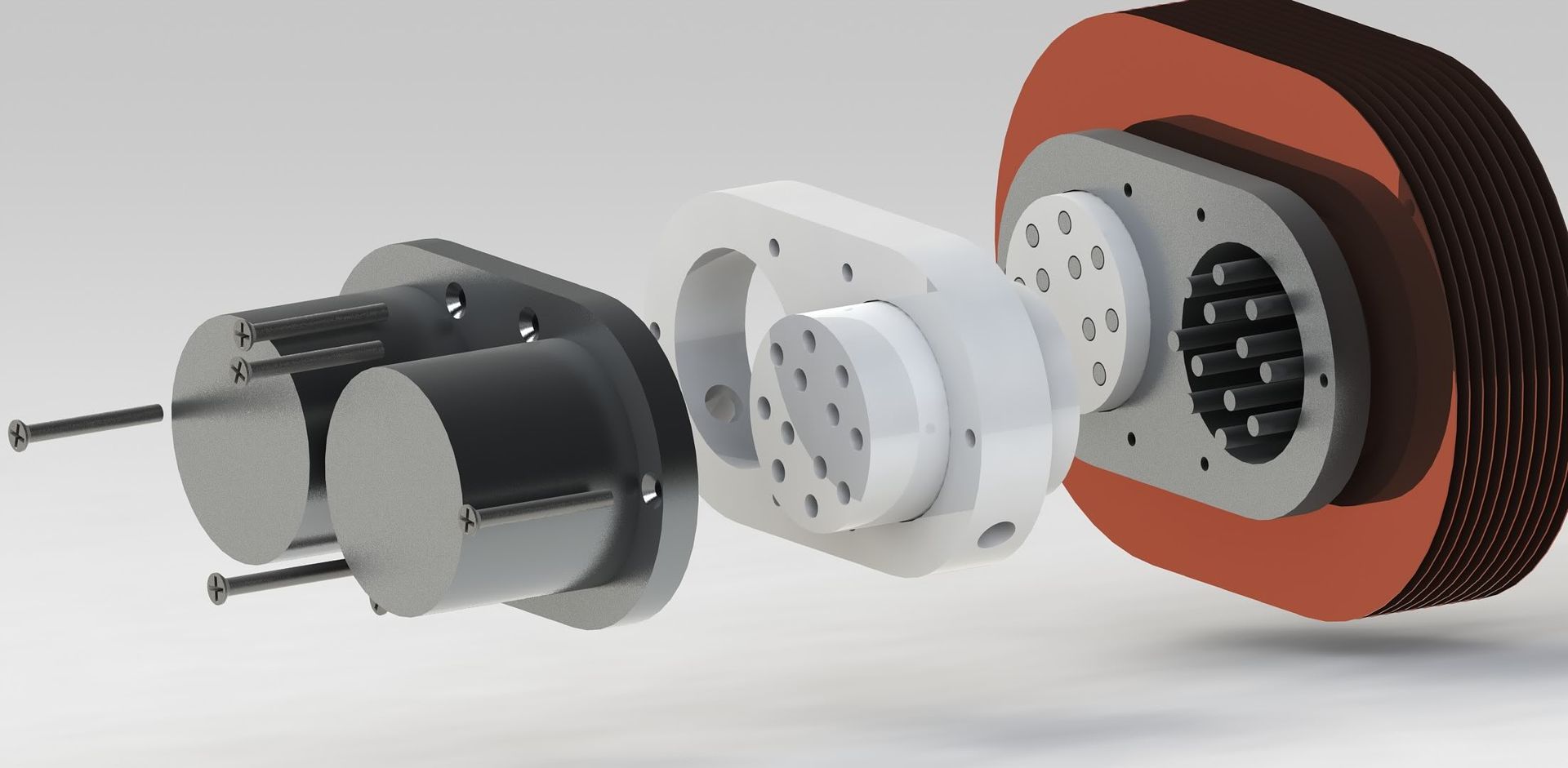After plugging in a series of temp differentials and conceptualizing in my head it seems to me that optimal stroke and bottom dead center are variables of RPM, hot and cold side temperature. Is it plausible to instead have a free floating piston drive a rotary vane motor through check valves?
how can I calculate the heat transfer between air and aluminum with a static surface area over time? I'm sure there is a experimentally derived K factor in there some where. If I could calculate the exact heat per mole of air at any given time during a cycle at any RPM and temp differential it would make designing this thing a lot simpler.
whats the typical natural frequency of small off-the-shelf check valves? having built in check valves makes the piston cylinders a lot more complicated and I would rather just plug them into hose barbs.
my displacer (photo below) has a much higher surface area to volume ratio than normal. Because of that it's possible to have a tighter fit and run at the same RPM's as a standard displacer before running into trans-sonic flow and compression. However, is there a minimum gap requirement? I'm worried that i may run into issues with a small gap to area ratio because of mechanics that I am not aware of.
I'm not an engineer I just have a GED and Wikipedia so please no flames. I'm hoping someone here is so they can help me understand this all better.

and yes, you can solder copper to aluminum, it just takes a bit more effort (it does corrode over time though).